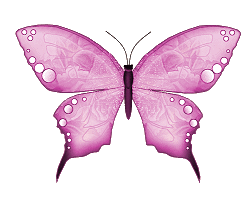|

|
Standard Treatment of Lymphedema--Skin
and Nail Care

Two
words summarize all the risk reduction practices and make them easy
to remember: "Promote"
and "Protect."
That means you will promote
the lymph flow in your affected arm/chest or other affected area,
and protect
the area from injury or infection.
(Please see the
article written by Dr. Mei Fu and published in the Wounds
International
Preventing skin breakdown in lymphoedema
Practice development Wounds International, Vol 1; Issue 4 Wounds
International
regarding skin care, or see or print a copy of the article in pdf
format here.)
Prevent infection
-
Lymphoderm
which is a lotion designed
specifically for lymphedema skin care.
-
Vanicream which contains no parabens, lanolin,
it's frequently used by dermatologists as a base for
creating lotions. Very non-irritating.
-
Eucerin Lotion is the #1 choice of
physicians and pharmacists for treating dry, sensitive skin.
Eucerin is effective and safe in the treatment of dry skin
associated with lymphedema. It helps alleviate dryness and
cracking that can lead to infection and possesses a low pH
which is useful when skin infection is a concern.
-
Elta Lite cream melts on contact, penetrating skin cell
layers to provide superior long term moisturizing.
-
Keep nails clean, and avoid cutting cuticles
-
Use a soft nail brush to thoroughly clean under your fingernails
throughout the day
-
Use sunscreen or protective clothing to prevent
sunburn--compression garments do not protect against
the sun
-
Use an insect repellent on any exposed skin
-
Avoid razor nicks and burns--See
Shaving Under Our Arms
-
Wear rubber gloves when handling household cleansers and
other chemicals
-
Wear rubber gloves when washing dishes
-
Wear sturdy work gloves when gardening or using
tools
-
Wear a thimble
when sewing to avoid needle and pin pricks to your
finger
-
Use extra caution when cooking to avoid burns
-
Avoid skin punctures from IVs, injections, and blood
tests
-
Discuss with your doctor the use of prophylactic
oral antibiotics with any medical procedure that
involves the affected parts of your body
-
Don't forget your feet! Keep them clean and dry and avoid
athlete's foot. You don't want to touch your feet or toes
and then bring that fungus up to your hands and arms!
Check them frequently for any red cracks or other signs of
fungal infection. If in doubt, treat your feet with an
anti-fungal cream or spray.
In case of nicks, scratches, burns, insect bites,
abrasions or any skin break, wash the area well and
apply a topical antibiotic. Watch for redness, itching,
sudden swelling, warmth to the touch, rash, or fever,
which may indicate an infection, and
get medical help
promptly.
Manicures
Regular
Manicures
- We can continue to get
regular manicures. We simply must take certain
precautions. It is always better to take your
own manicure "tools" with you, and most salons
give you a little "box" to keep them in at the
shop.
- Do not allow
your cuticles to be cut, but have them gently
pushed back.
- Keep your
hands well moisturized between manicures, and
gently push your softened cuticles back gently
with an orange stick.
- When coming
home from your manicure be sure to give your
fingers an "alcohol dip" to make sure they are
germ free, and I also cream my hands with
Lotromin (anti-fungal cream) in case I could
have picked up any fungus.
- Also, we find
the longer you keep your nails, the more little
"shovels" you have for bacteria, germs, etc.
So, we always keep a nail brush near the
anti-bacterial soap and wash and brush under the
nails frequently throughout the day.
Gel Nails/Acrylic
nails
- We can even
continue to use acrylic or gel nails at our
manicures. But we must take certain precautions
to protect ourselves from infection.
- I personally
used to get acrylic nails, but stopped that
during chemo, I then found after chemo that
taking all the supplements I do and the Arimidex
(one good thing about it) made my nails "hard as
nails," as they say.
- So now, I
have a thin layer of UV gel put over my own
nails after the "white" being painted on. There
are much less chemicals involved in the gel then
the acrylic or powder, and you need to put your
nails under a special UV light to get them to
"cure" (harden.)
- I bring my
own tools and files and pedicure equipment, and
my salon gives everyone a little "box" to keep
their stuff in. They also autoclave all of
their equipment so if you don't have your own,
they break out the equipment from a little
plastic bag where it has been sealed after being
autoclaved, same as at the dentist.
- I usually
wait three weeks before having the "fill-ins"
which leaves enough space near the cuticle so
they can stay far away from it with the
dremmel. I also have my own dremmel heads in my
box, the fat round one and the skinny fine one.
- I have been
using the same lady, and have explained to her
my problem that I do not want my cuticles cut,
and that she must be very careful with the
dremmel or she will never see me again.
- Afterwards,
she sprays my hands thoroughly with Sea Breeze,
and when I get home, I give them an "alcohol
dip" to make sure they are germ free, and I also
cream my hands with Lotromin (anti-fungal
cream) and my feet with it also after
pedicures, in case I could have picked up any
fungus.
- So far I have
not had any problems, knock on wood. But I
think taking the extra precautions if you
want to continue to have your nails done is well
worth it.
- The UV gel is
a little more expensive, but it is much
"smoother" after being under the UV light, so
many times she can do without the dremmel
altogether and just use a nail file or one of
those square buffing things to smooth them
before finishing.
- Also, we find
the longer you keep your nails, the more little
"shovels" you have for bacteria, germs, etc.
So, we always keep a nail brush near the
anti-bacterial soap and wash and brush under the
nails frequently throughout the day.
OneBadBoob
|

Page Last Modified
09/29/2015
All medical information
presented on this page is the opinion of
our Editorial Board and Experts. See our "About
us"
and
"Resources"
pages.
|



